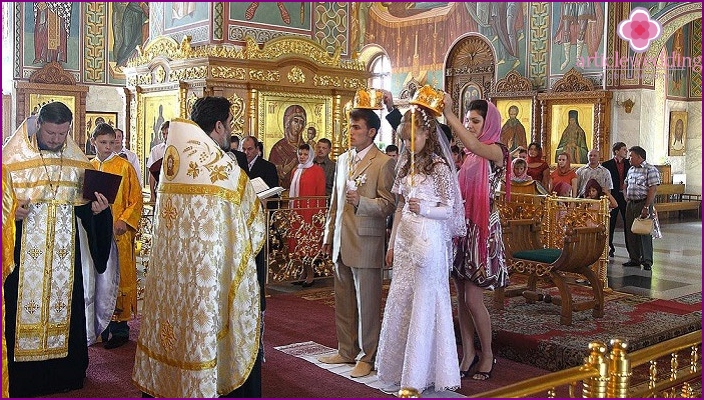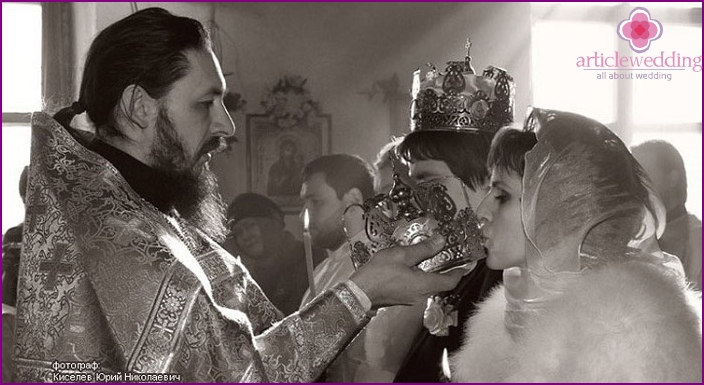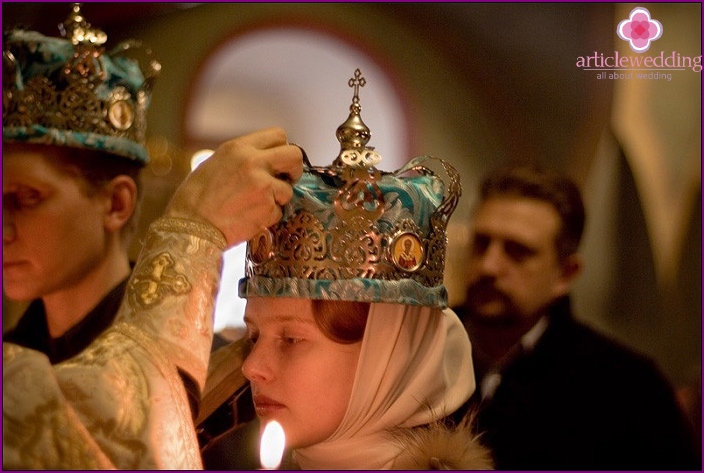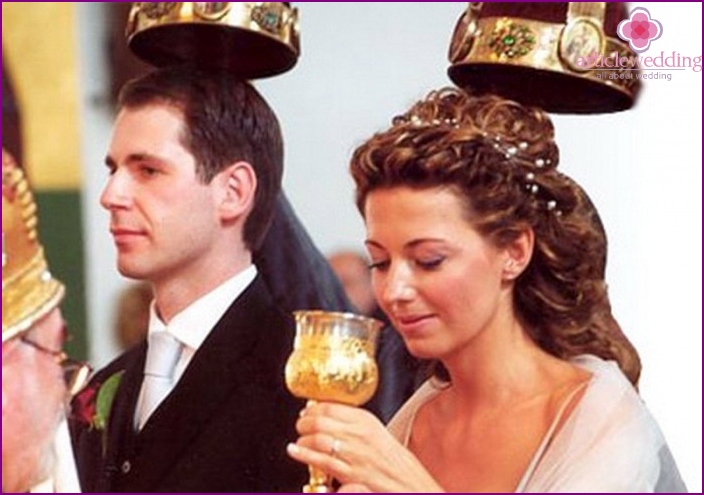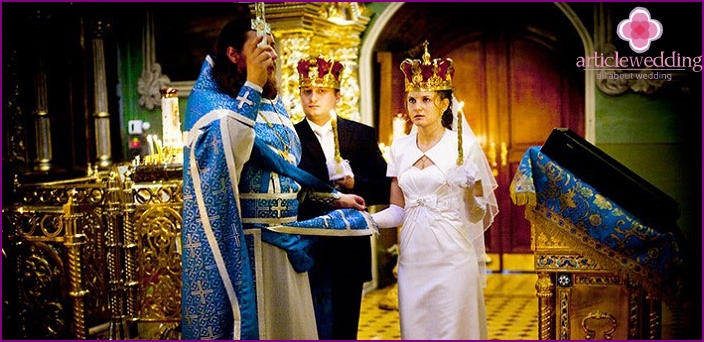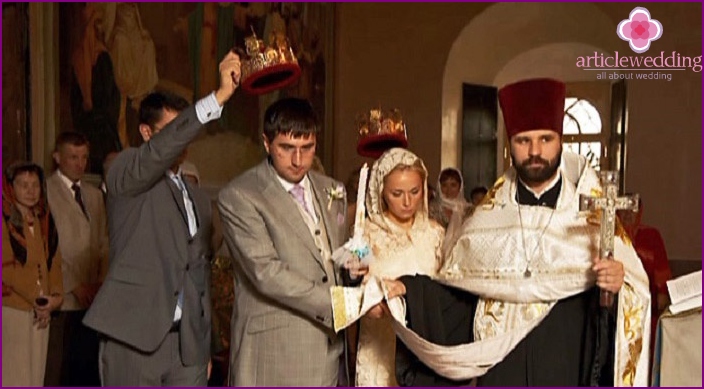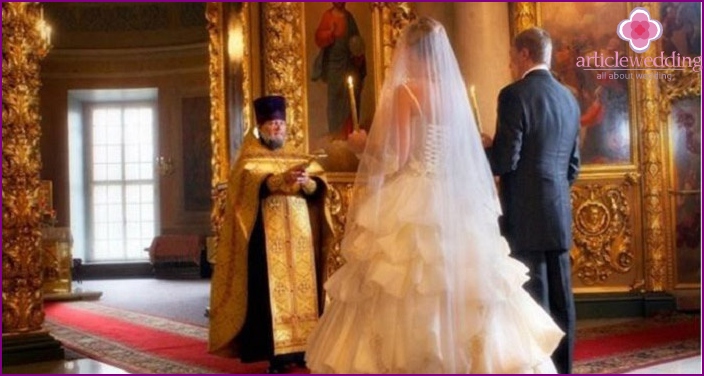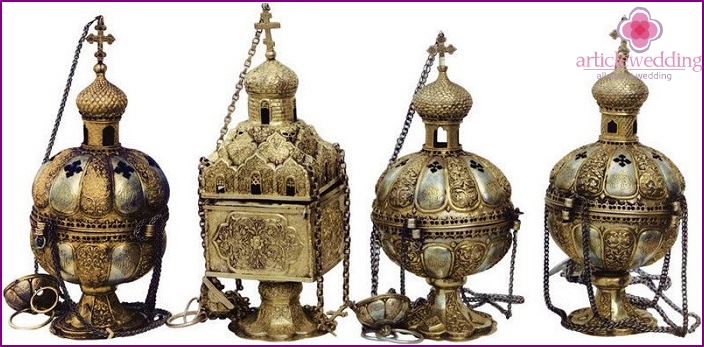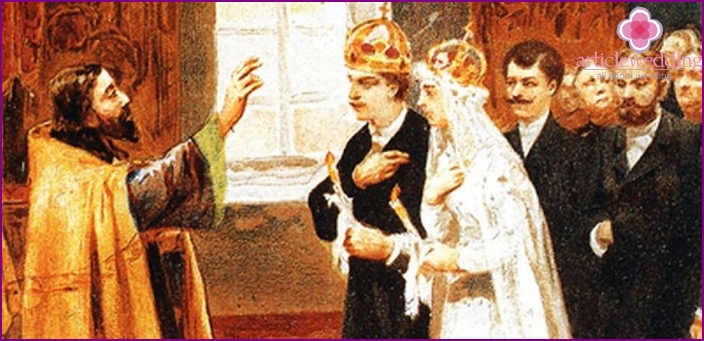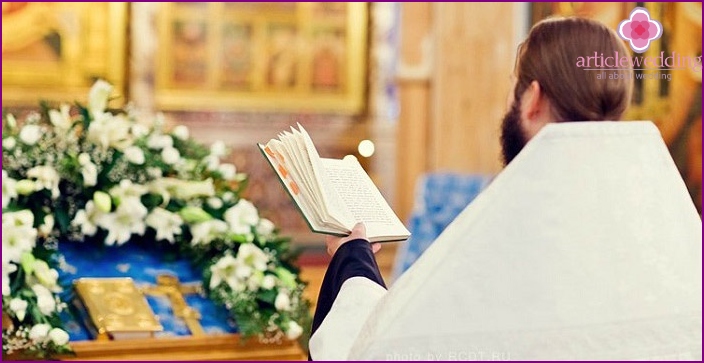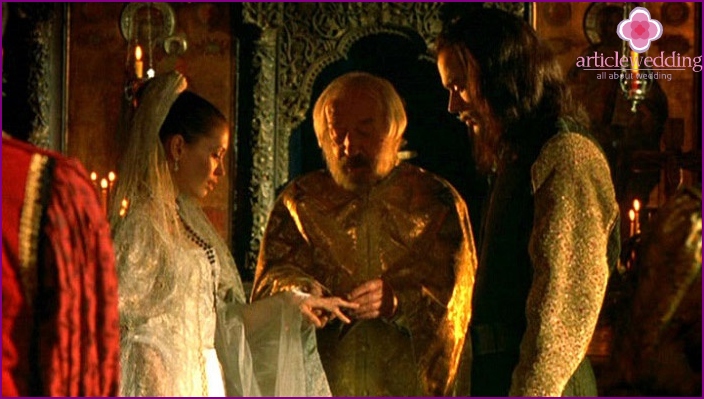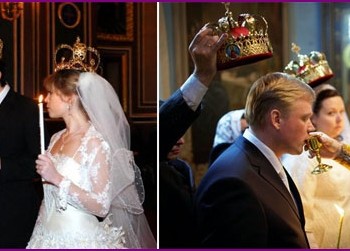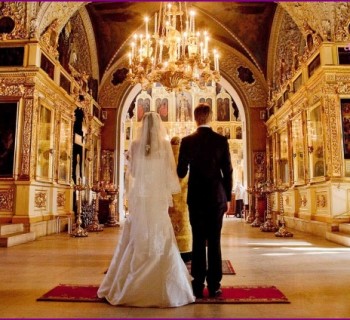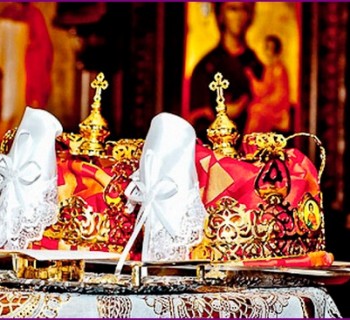Contents
- What is the sacrament of wedding and how does it go?
- The rules of the great church sacrament in Orthodoxy
- What you need to get before the ceremony?
- What witnesses need to know?
- How is betrothal committed?
- What should be a wedding meal?
- What could prevent a Christian marriage??
- Wedding Preparation Video
Wanting to be married, a couple can not only sign in the registry office, but also combine with more subtle bonds - the bonds of a spiritual marriage. From time immemorial, solely the sacrament of wedding in the Orthodox Church held couples married. Today, this tradition has rarely been implemented, but it is unjustified. Marriage contains a deep meaning, it is a serious and special life stage of each person, and therefore it requires the same special fixing. It is necessary to touch the sacrament of wedding in order to feel the importance of the event. How it is done will be described later..
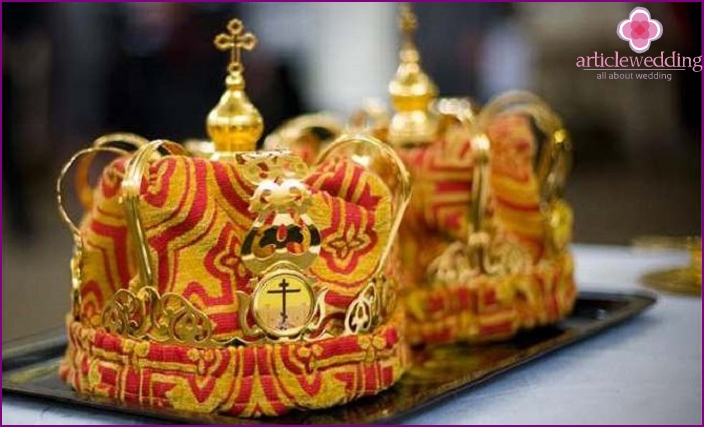
What is the sacrament of wedding and how does it go?
The sacrament of marriage is a rite of unity of two people by marriage and the consecration of this marriage by divine grace. It is held in Orthodox churches for people who want to be united not only before the state, but also before God. This is the highest manifestation of trust, love for each other, because the wedding can be performed only once (occasionally two or three, but in connection with special circumstances). To break such bonds unauthorizedly, to change, being in a spiritual marriage is no longer a matter of morality, but an act of sin. Therefore, the sacrament of wedding is always a crucial step..
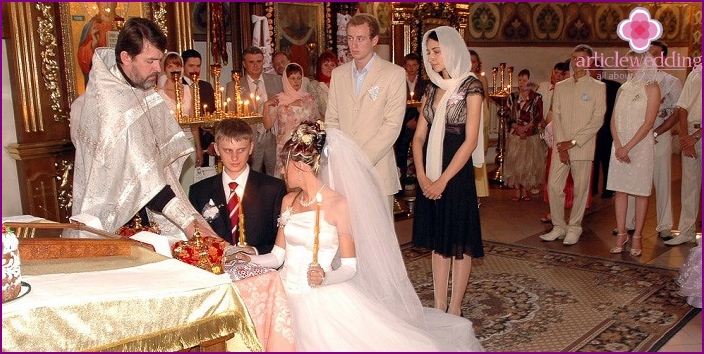
The wedding ceremony is designed to instill in the future spouses the importance of marriage, to explain its meaning, to prepare young people for proper family relationships, and to direct them to spiritual development. The wedding allows you to cleanse the sinfulness of human unity, translate it through the line of sinfulness into the form of a clean, God-blessed marriage. This is manifested in the symbolism of the rite of betrothal and wedding. The sacrament of wedding is now carried out immediately after the rite of betrothal, doing the following:
- The bride and groom with candles (symbol of the light of the sacrament) in their hands, go to the middle of the temple. Before them is a priest with a censer, from which the smoke of sacred incense spreads (a symbol of the commandments that the young will have to follow, their good deeds, the message of which will be heard by God). Choir sings Psalm 127.
- The young stand on the sacred coverlet (plate), spread out before the lectern, on which the crowns, the cross and the gospel are already laid, necessary for the wedding.
- Groom and bride express their desire to get married («Imam honest father» - «I have (desire to marry), honest father»), confirm the absence of other people with whom they would promise to get married («Not promised / Not promised, honest father») This is how a natural marriage is made (according to the flesh), after which the sacrament of the wedding itself begins - the consecration of the marriage by the grace of God.
- Priest says prayers and prayer petitions for newlyweds.
- Next, the priest takes the crown of the bridegroom, baptizes the young one with them, gives a kiss to the icon of the Savior, which is attached to the front of the dress. Pronounces: «God's servant (name) is crowned a servant of God (name) in the name of the Father, and the Son, and the Holy Spirit». It does the same for the bride.
- The crowns are laid on the heads of the betrothed, through them the blessing of God must ascend upon the spouses.
- The priest makes a request from God to marry the young, blessing them three times. This is the holy moment of the wedding.
- Those present should repeat the prayer request for the wedding of the couple after the priest.
- Bible Excerpts on Marriage: The Epistle of the Apostle Paul, Gospel of John.
- A petition is being made on behalf of the Church for the bride and groom.
- Young and everyone present pronounce «Our Father», bow their heads, priest glorifies the kingdom of God.
- Wine is brought in «more communication», from which young people drink three small sips each, starting with the groom.
- The priest joins their right hands, covers them with sacred epitrachilla (the upper part of the priest’s ritual dress) and puts his hand on top. So he leads the young three times around the lectern to the singing of troparia.
- After walking, the priest removes the crowns from the heads, gives the last instructions..
- Young people bow their heads, the priest reads two more prayers for the reception of the crowns of the newlyweds in the Kingdom of God.
- Newlyweds kiss.
- They are brought to the icons of the Savior and the Mother of God on the royal gates, which they should kiss. The priest gives the young cross for kissing, as well as the icon of the Savior, Mother of God. This concludes the sacrament of wedding.
?
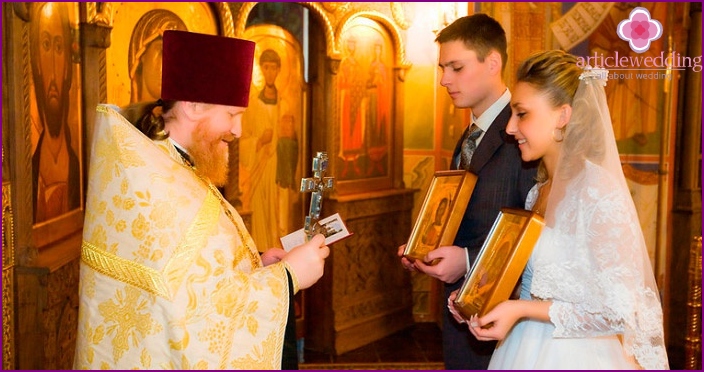
The rules of the great church sacrament in Orthodoxy
The sacrament of wedding is a rite that contains the implementation of strict rules. The ceremony consists of 4 stages: engagement, wedding, permission of the crowns and prayer. If earlier there was a time interval between the sacraments of betrothal and wedding, then today all stages often merge into one, continuing each other. To perform the sacrament of marriage, a friend and a friend (witnesses, or receivers) can be appointed. Special dates are selected because not all days the wedding ceremony can be performed. Young people prepare for the sacrament by fasting while in prayer.
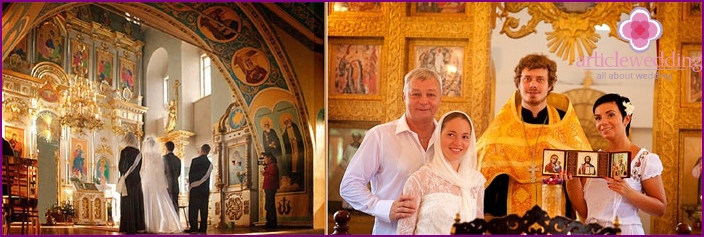
The sacrament of marriage is a spiritual act, and therefore must be performed with meekness and dignity. The church adheres to modern traditions, allowing photo and video shooting during the sacrament, however talking to, laughing, walking around the temple, turning your back on images or just serving time until the end of the event is strictly prohibited.
What you need to get before the ceremony?
In order to carry out the sacrament of marriage in the Orthodox Church, it is necessary to have some objects that have sacred meaning and are directly involved in the process of performing the ceremony:
- Two icons - Mother of God and Savior. Previously, such icons were inherited, if they are not there, then you need to purchase.
- Rings (consecrated). Previously, gold (for the groom) and silver (for the bride) were taken, in the process of exchanging rings during the betrothal, the wife remains gold, the husband has silver, which symbolically demonstrates the basis of the relationship in marriage. Modern practice allows both young people to have gold rings, buy jewelry decorated with stones.
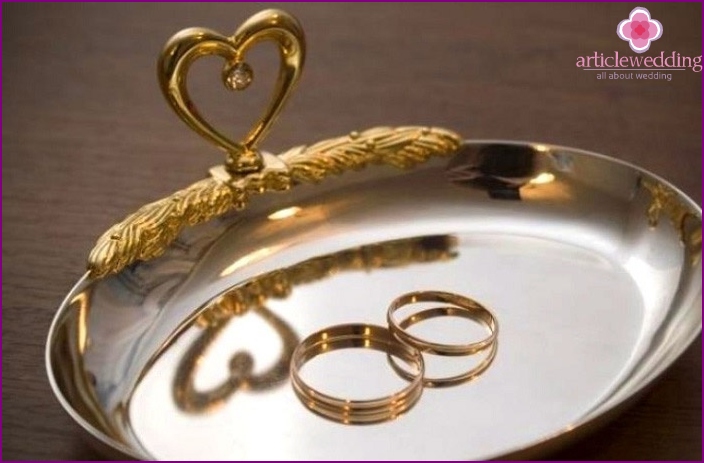
What witnesses need to know?
Witnesses, which according to church tradition are called perceivers, are guarantors, assistants for a young family. They, like godparents, must take care of the spiritual development of the young in their marriage. In past times, it was customary to choose people who were experienced in family affairs, trustworthy, so that they could become loyal advisers on the path to becoming a new family. Now it can be people of any age, but with the right attitude..
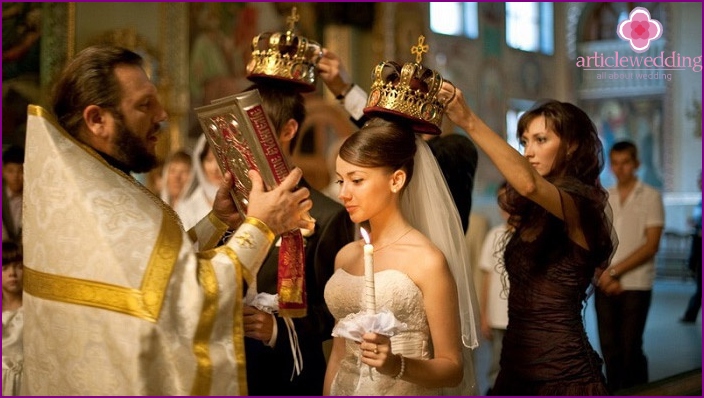
Previously, they vouched for marriage by signing in the metric book, in our time, when church marriage has only spiritual meaning, but not legal force, the presence of perceivers is not necessary. However, they are still entrusted with helping young people during the sacrament of weddings in the Orthodox Church - holding the crowns while passing around the lectern. Witnesses should remember that they should be responsible for their task, be indifferent to their future family, be baptized and believing people, be gentle, reverently behave during the ceremony.
How is betrothal committed?
The sacrament of betrothal is an obligatory stage of marriage, which secures the bridegroom’s right to the bride and vice versa, this is the moment the couple is created before the Lord, the blessing comes upon her, as well as time for moral preparation for the wedding, for reflection on the nature of marriage. The sacrament of betrothal is performed in the church, on the eve or on the day of the wedding. The sacrament of marriage is a logical continuation of the engagement, and can be performed immediately after it, but the sooner the young are engaged, the more time the couple will have to realize the importance of the wedding, to prepare for it. Stages:
- The Divine Liturgy is held. The narrowed are imbued with an atmosphere of purity, faith, tuned in to understanding the importance, severity of the event.
- Young people should appear before the gates of the church, behind which, at the altar, there is a priest, who will conduct the rite of betrothal. This is a demonstration of the fact that the groom takes a girl for his wife from the hands of the Lord himself and from that moment should bear responsibility for her.
- The priest introduces the young to the holy premises of the temple. This symbolizes the transition of the young to a new state, to the life of a pure marriage, undefiled by sin, a lawful marriage, blessed by the Lord.
- Next, incense is lit, and censing (fumigation with sacred smoke from a censer) is performed with prayer. This is a symbolic follow-up to Saint Tobia, who, according to Christian history, drove away the demon of discord of pious marriages with prayer and smoke of a burning heart and liver of a fish. It is also a symbol of the presence of the holy spirit, its grace, which from this day will arrive with the young in their marriage.
- The priest blesses the groom, and then the bride three times. For each blessing, the young overshadow themselves three times with a sign of the cross, after which the priest hands them candles. Candles symbolize purity of heart, love, thoughts, young chastity, the grace and sacrament of God, the birth of a new legal couple in the face of the Lord.
- Then comes the glorification of God, prayers are read, including prayers from all those present in the church for the couple, for their salvation, protection, guidance on the true path, blessing for good deeds, for the birth of beautiful children.
- Young people, like everyone present in the church, at the insistence of the priest, bow their heads to the Lord, waiting for his blessing. The priest reads a prayer over them.
- Then he takes rings from the right side of the holy throne, first dresses the groom, pronouncing «The servant of God (name) is engaged to the servant of God (name) in the name of the Father, and the Son and the Holy Spirit», overshadowing him three times with a sign of the cross, then to the bride, with the words «The servant of God is engaged ...», also overshadowing her with the sign of the cross. The rings here are a symbol of the eternity of love and the bonds of marriage.
- Young people exchange rings three times (or change a priest) as a symbol of lifelong love, sacrifice, bridegroom assistance to the bridegroom, love and devotion of the bride herself, her whole life’s willingness to accept help from the groom.
- The priest prays to the Lord for blessing, the affirmation of the unity of the couple, expressed in the position of the rings, for the sending of the guardian angel to be narrowed for guidance and protection. This completes the engagement.
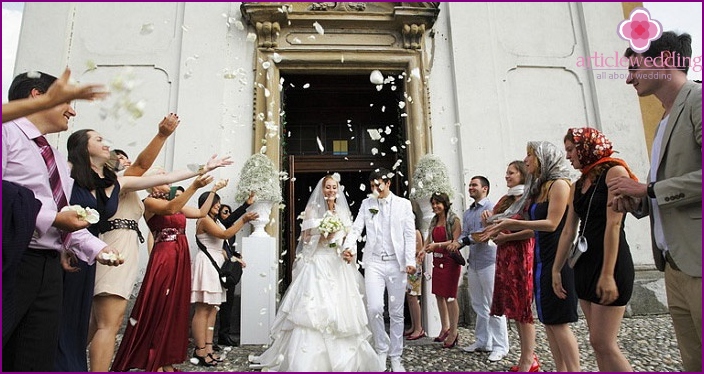
What should be a wedding meal?
After the sacrament of weddings in the Orthodox Church, it is customary to hold a wedding meal in honor of the marriage of the young, during which their relatives, friends, other guests can send congratulations to the newlyweds, be happy for them, give gifts. A church meal according to Christian custom and signs should be modest and decent. Not allowed: to drink excessively, pronounce vulgarity, use indecent words, sing immodest songs, dissolve to dance.
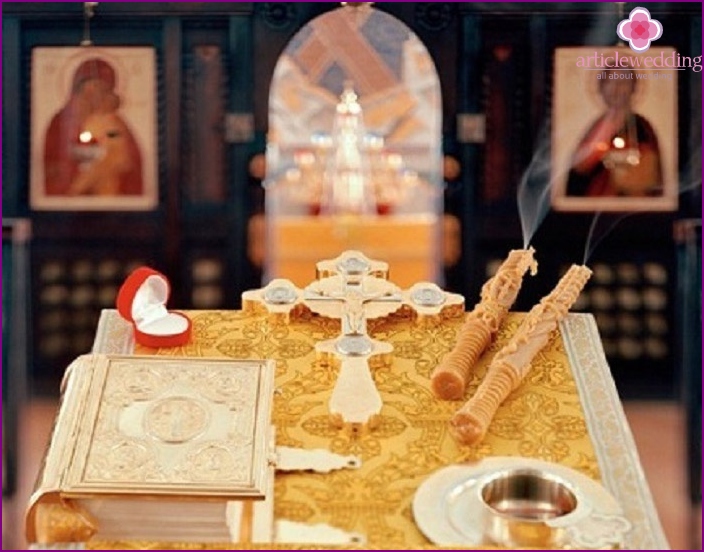
What could prevent a Christian marriage??
Any Christian can combine the bonds of church marriage through the sacrament of marriage in the Orthodox Church, but there are some exceptions. So, it is not allowed to get married in the Orthodox Church:
- People who are married to another person at the time of the wedding, and not to those who are going to get married.
- To people who are among themselves in blood or spiritual kinship (godmother-godson).
- People who marry more than three times.
- People who have already been married and have not been asked to divorce the church from the bishop (allowed within 3 times, the last time can not lead to a new marriage).
- Baptized people.
- People who are unbelievers or were forced by the future spouse to the sacrament of wedding.
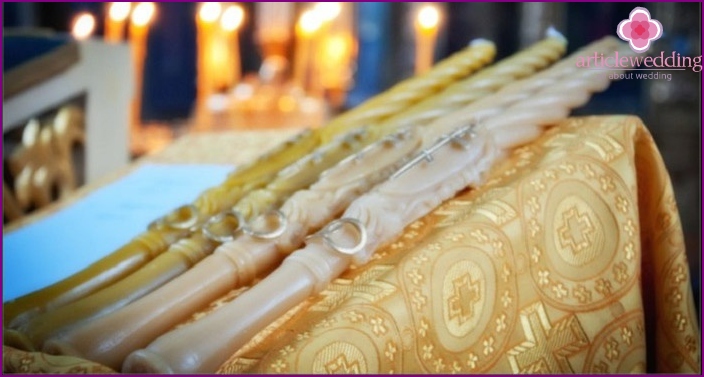
- On certain days of the year: during all fasting, on Easter and cheese weeks, from Christmas to Epiphany, on Saturdays, Tuesdays, Thursdays, on the eve of the twelfth and great church holidays, on the eve and on the day of the Beheading of John the Baptist (August 29 and September 11), as well as the Exaltation of the Holy Cross (September 14 and 27). Exceptions can only be made by decision of the current bishop..
- Clergy.
- Minors, as well as those whose age is beyond the marriage threshold (60 years for women, 70 for men).
- Those whose marriage was not blessed by their parents (if they are Orthodox).
- Newlyweds with different faiths.
- Those who became the culprit of the dissolution of a previous marriage (for example, traitors).
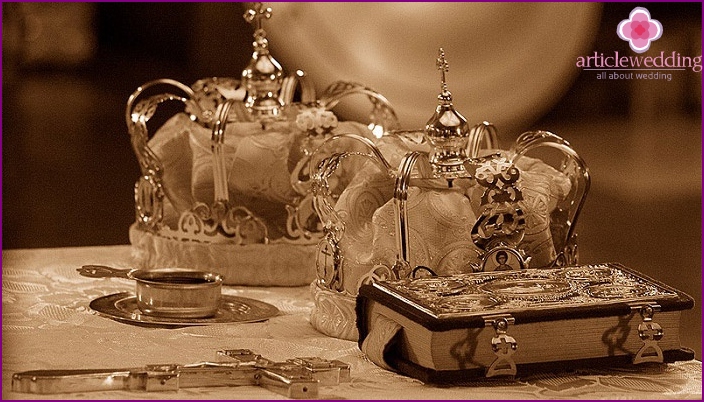
Wedding Preparation Video
Preparation for the sacrament of wedding - a combination of young church marriage. Preparation must be taken seriously, thoughtfully, understanding the deep meaning of the sacrament. The purpose of preparing for the sacrament of weddings in the Orthodox Church is the spiritual cleansing of the young, the comprehension of the sacred task of marriage. This is necessarily communion, confession, fasting, prayers, which will help to correctly carry out the transition of young people to another life stage, to give the unity of people a sacred rather than a sinful character. You can learn more about how to properly prepare for the sacrament of weddings by watching the video:
